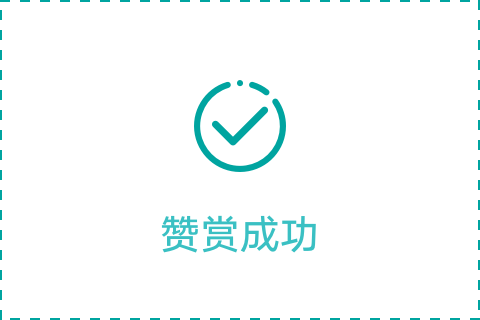Beijing’s War Against Second Wave of COVID
BEIJING, June 16 (TMTPOST)This week was originally scheduled for reopening primary and secondary schools in Beijing. Karen Chen, an energy analyst in Beijing, had planned her business trip to a city in eastern China after being set free from her homebound routine with her 9-year old son due to the COVID-19 shutdown.
However, her hopes were dashed by a flood of figures in days running up to the reopening: last Thursday, June 11, the first COVID-19 case was reported after 56 days of zero new infections across China’s capital; last Friday, six new cases followed; last Saturday, 46 new infections were reported; last Sunday, 36 new cases were confirmed last Sunday.
The absolute numbers are not high compared with cities in other countries, like Japan, Canada or the United States. While Japan reported more new infections, it was preparing to ease travel restrictions. Toronto, Canada’s largest city, reported over 180 new cases on Monday. The outbreak was alarming largely because of the reversal of the 7-week coronavirus lull and a cluster of infections in hustle-bustle meat and produce wholesale markets. A few cases in provinces including Hebei, Liaoning, Sichuan and Zhejiang were also traced to the market.
Patient zero in this wave of infections was surnamed Tang and 52 years old. He resided in Dongdajie Xibianmen, Yuetan Jiedao, Xicheng District. He did not leave Beijing in the past two weeks and had no contact with non-Beijing residents. Tang visited the market on June 3 and got sick on June 6.
Two Late Night Press Conferences in Tandem
The Beijing Municipal Government has held a daily press conference on coronavirus since late January. However, three news conferences were held in a day, with one in the morning, the other two in tandem deep in the night.
At the third conference that started around 10 p.m, the health alert in Beijing was raised to the second highest level. A series of severe counter-epidemic measures were announced.
Firstly, travel restrictions will be in place starting Wednesday. All visitors to Beijing must be tested for nucleic acid and only those free of COVID-19 will be allowed into the capital. Residents of neighborhoods labeled as medium-risk and high-risk areas will not be permitted to leave Beijing while those in low-risk neighborhoods must produce a clean medial bill for the past seven days before departing the megacity, and only for essential travel.
Second, high-risk neighborhoods and villages in the suburbs must be isolated from other parts of the city. No one is allowed to leave the areas and all residents must stay at home and take coronavirus tests.
Third, all schools will be shut down, from kindergarten to higher education institutions. Other measures include encouraging work from home and limiting traffic in libraries, museums and arts galleries. Inter-provincial package tourist groups will be halted.
Meanwhile, four local officials, including deputy director of Fengtai District and the managing director of the market, were sacked due to the emergence of new cases.
“Door-to-door” Search and Around-the-clock Testing
Chen was ready for sleep on Monday after putting her two sons to bed when the doorbell sounded. The local community official was outside the door, asking if her family had visited the markets in the past two weeks while he wiped the sweat off his brow.
She received a few phone calls from local officials each time after she came back from a business trip since the onset of the pandemic. But this time it was an in-person visit at almost 10 p.m. She was moved by the hard work of local officials.
A few days ago, when she talked with a U.S. coworker over the phone, she considered telling him the end of the coronavirus outbreak in China, but refrained considering the dire situation in the United States.
As in late January and February, the Beijing government was fast in responding to the new outbreak. By Monday afternoon, about 200,000 people out of 20 million were found to have visited the source of the outbreak since May 30.
By 4 pm on Monday, about 76,000 people had been tested for nucleic acid, including over 8,000 merchants and workers in the wholesale market. The testing capacity in Beijing is over 90,000 tests per day. There are 98 qualified labs and 193 testing centers in Beijing, according to the municipal government.
On Monday afternoon, residents in Xincun Jiedao of Fengtai District rode a mini-bus organized by the community committee to the testing center. A 69-year-old man surnamed Yang who had bought fruit in the plagued market said: “The community committee is rigorous in their search for people with contact with the wholesale markets. Once the test is done, I will know if I am infected.”
In Youan Hospital, appointments for a throat swab test need to be reserved. Currently the capacity is about 800 tests each day. Lab staff and the testing devices are running around the clock.
Wu Zunyou, the chief epidemiologist of the Chinese Center for Disease Control and Prevention, said that the outbreak is still in the early stages given that only 59 infections were detected out of about 76,000 nucleic acid tests.
Inter-provincial Travel Cancelled
Chen had signed a disclaimer that his son was free of COVID-19 last week. Now it was useless as the school remained closed.
Her business trip is also not feasible given that she has to get tested in Beijing and tested again in Shandong. Some provincial-level regions, including Sichuan, Inner Mongolia and Chongqing, ordered visitors from Beijing to undertake a mandatory 14-day self-isolation. After pondering the pros and cons, she decided to stay at home in Beijing.
敬原创,有钛度,得赞赏



更多精彩内容,关注钛媒体微信号(ID:taimeiti),或者下载钛媒体App

 346人赞赏钛媒体文章
346人赞赏钛媒体文章



